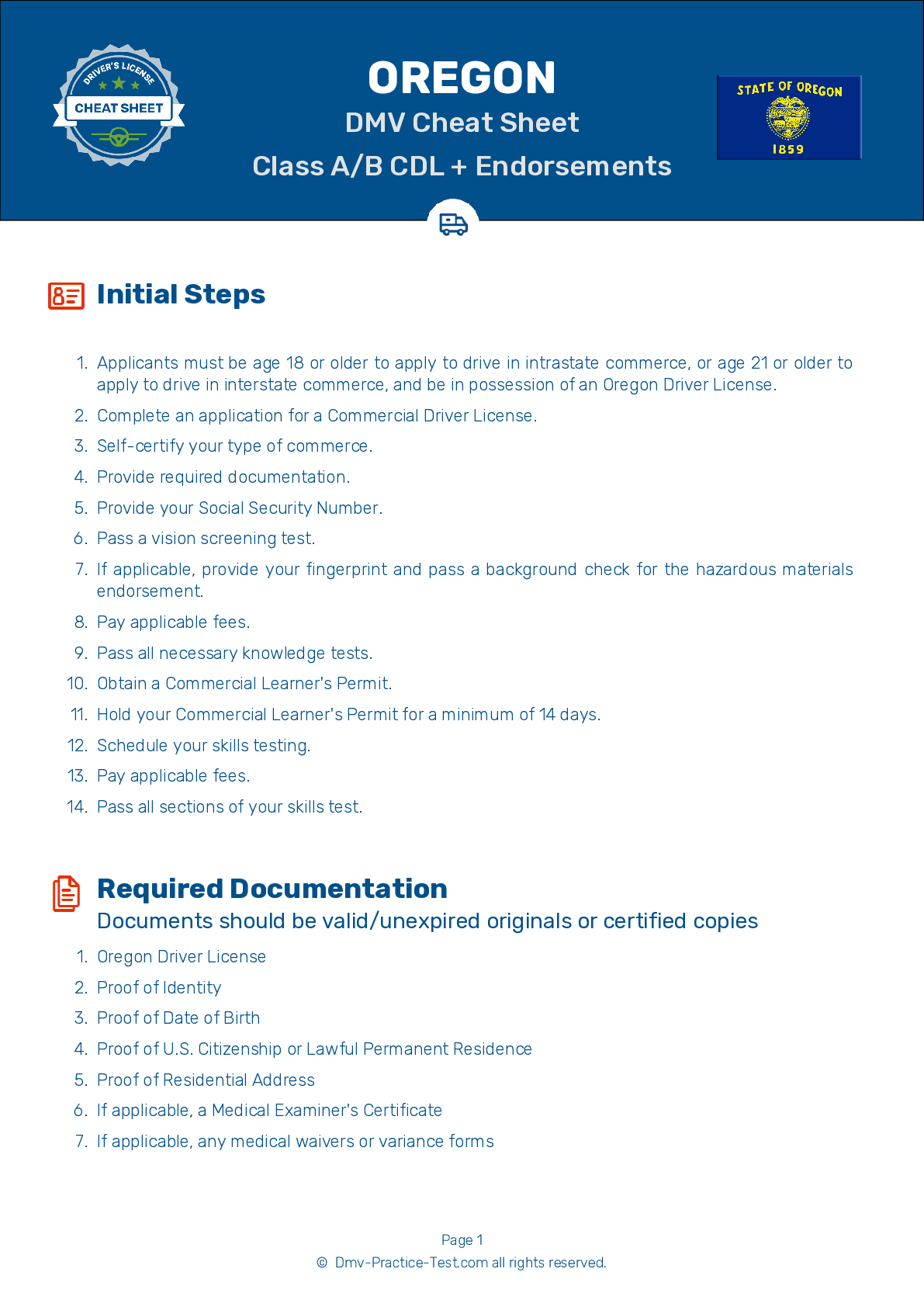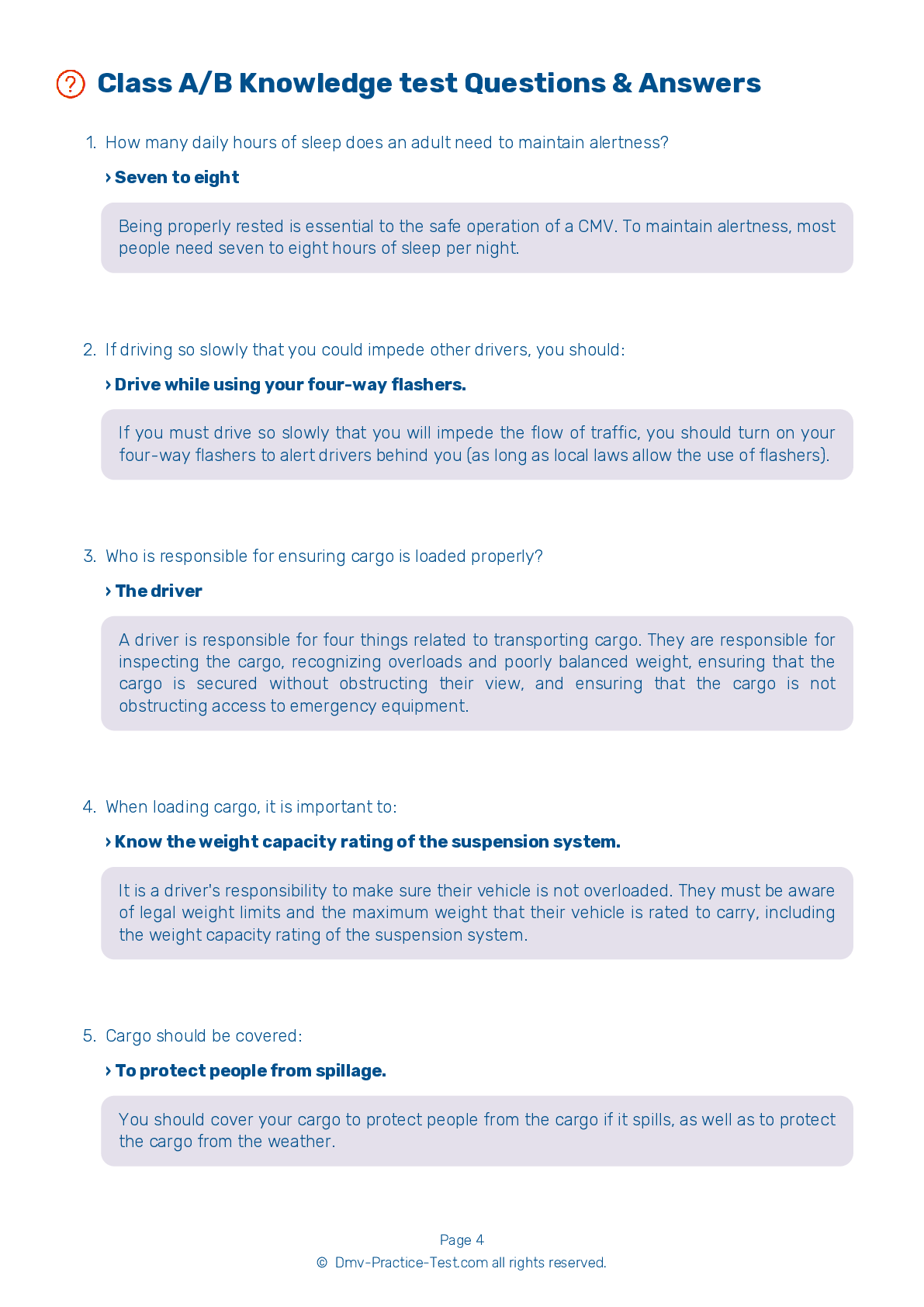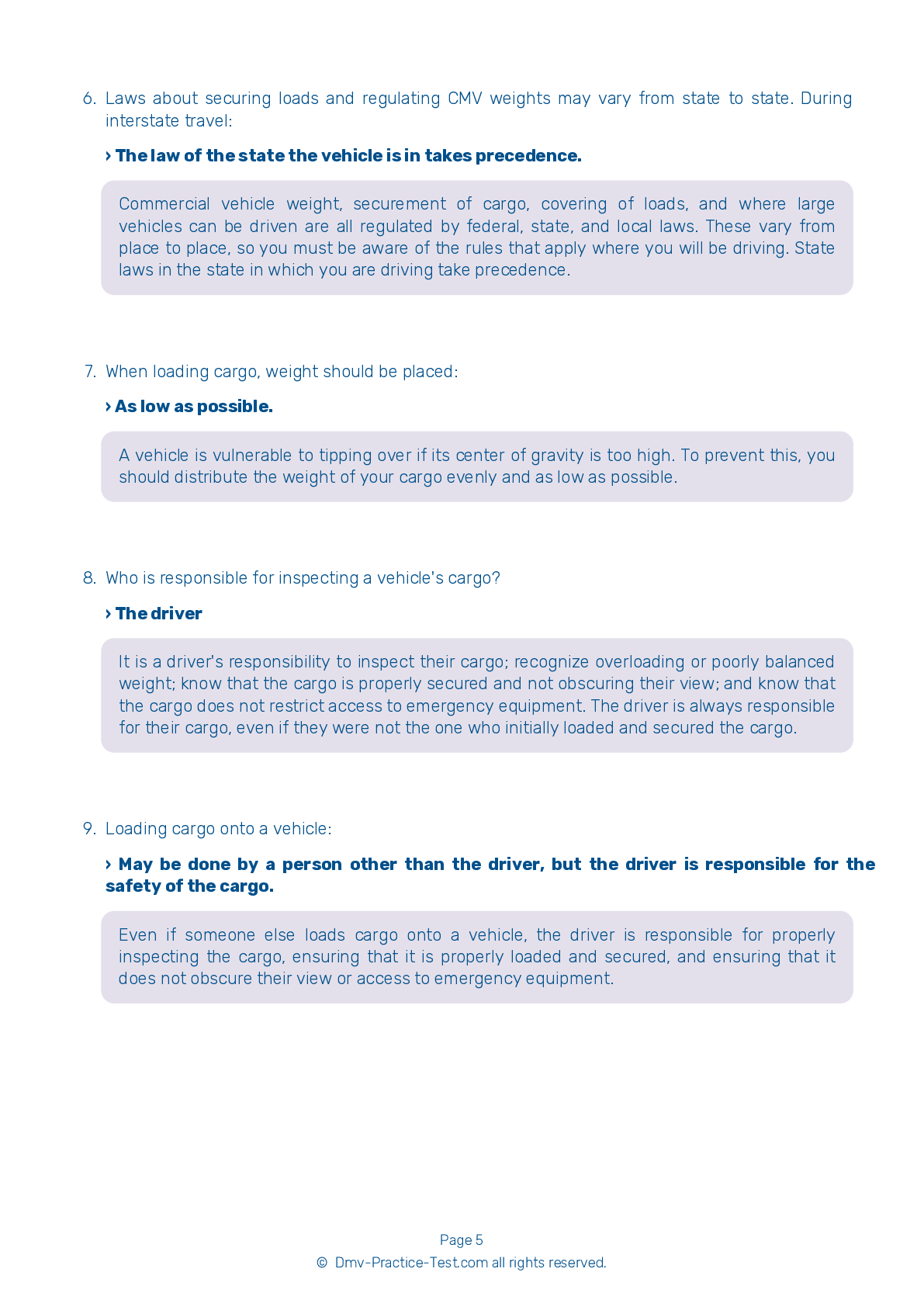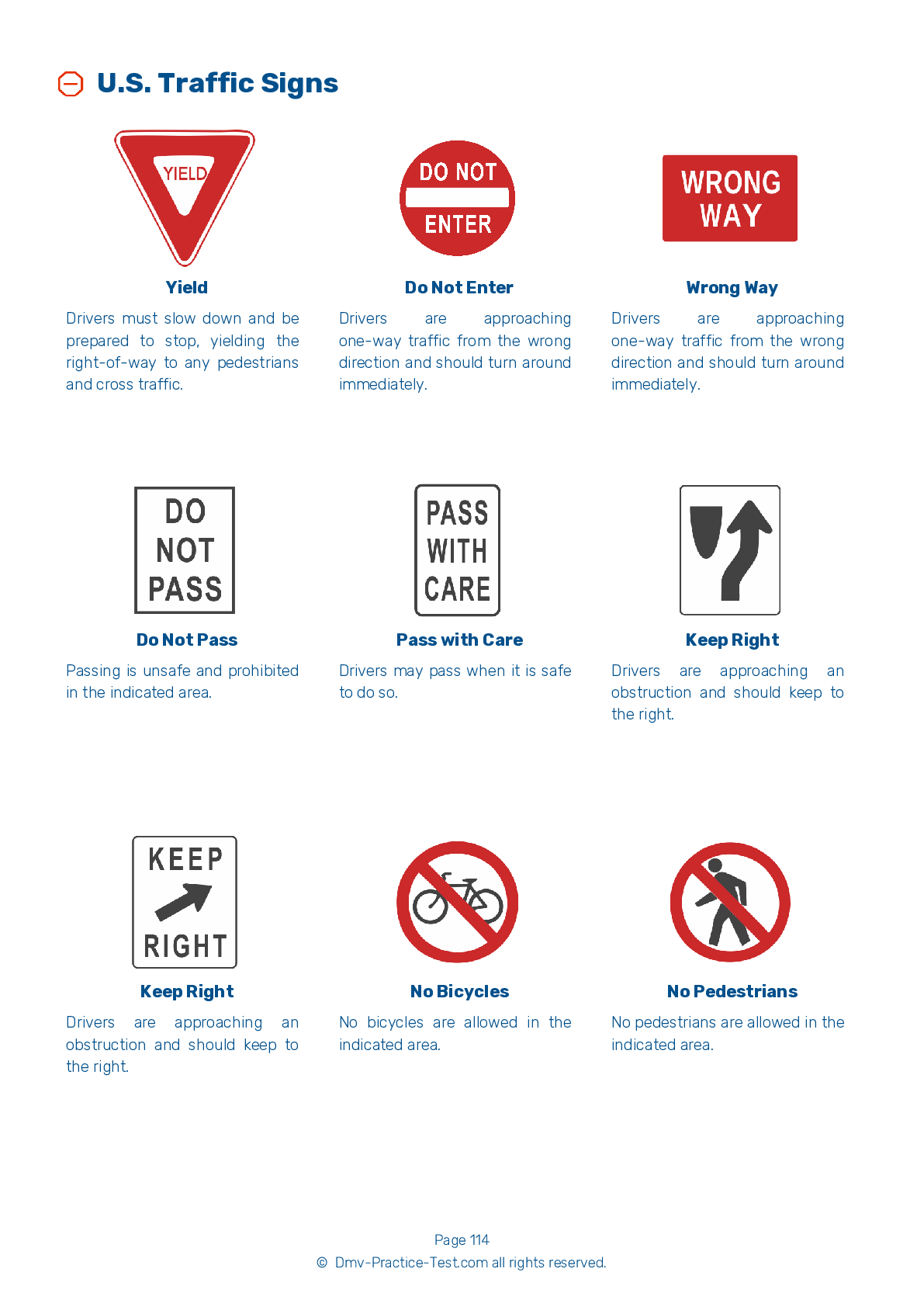Double #2
Double Triple Test | Oregon 2025 #2 Page 2 of 3
Train for FREE with our Oregon CDL double triple practice test online. The official exam test consists of several obligatory parts, with all of them checking your knowledge of different blocks of road rules. If you need to obtain a OR CDL double triple license in 2025, practice as much as possible. Free sample tests published on our website will help you check and improve your knowledge and boost your grades. Please bear in mind that DMV requirements may vary from state to state.
20
16
20
8 . After a vehicle is started, warning lights and buzzers:
Should remain on.
After starting the engine, warning lights and buzzers should go out right away. If a light stays on, it usually indicates an issue with the vehicle.
9 . After starting the engine as part of a pre-trip inspection, the driver should:
Check your engine during the pre-trip inspection. After starting the engine, you should listen for unusual noises.
10 . After a tire has been changed, the driver should stop after a short distance to:
After a tire has been changed, the driver should stop a short distance later to recheck the tightness of the tire's lug nuts.
11 . When checking windshield wiper blades, they should be:
When inspecting your vehicle, you should check the wiper blades for damage, stiff rubber, and proper securement. Clean the blades if they are dirty.
12 . When pulled off on the side of the road, a driver should:
Turn off all lights.
If you must stop on the side of the road, it is important that you turn on your emergency flashers as a warning to other drivers. This is especially important if you are stopped at night.
13 . How many daily hours of sleep does an adult need to maintain alertness?
Four to five
Being properly rested is essential to the safe operation of a CMV. To maintain alertness, most people need seven to eight hours of sleep per night.
14 . While driving downhill, you should brake until you reach a speed that is ____ below your safe speed, then release the brake pedal.
20 mph
While driving downhill, you should hold down the brake pedal until your vehicle reaches a speed 5 mph below your safe speed, then release the brake pedal. Repeat this process.
2025 Oregon | Frequently Asked Questions
To secure a CDL Bus endorsement in Oregon, you must first have a Commercial Driver's License (CDL). Then, pass the Passenger Vehicles endorsement written test. After passing the test, you must also pass a skills test in a vehicle representative of the type of bus you'll be driving. Lastly, complete a background check if transporting children.
To obtain a CDL Bus license, you need to have a valid driver's license, pass a physical examination and have good vision and hearing. You must also pass the CDL general knowledge test, the passenger transport test, and a skills test in the type of bus you'll be driving. Lastly, complete a background check if you'll be transporting children.
Yes, specific training is necessary for a CDL Bus endorsement. Applicants must pass the General Knowledge test and the Passenger Transport test. If driving a school bus, they must also pass the School Bus endorsement test. In addition, they must complete a commercial driver training course and gain experience through supervised driving.
CDL Bus licenses fall into three main classifications: Class A, B, and C. Class A is for vehicles towing trailers over 10,000 lbs, which doesn't typically apply to buses. Class B is for single vehicles over 26,001 lbs or towing trailers under 10,000 lbs, like city buses. Class C is for vehicles designed to transport 16 or more passengers (including the driver), like school buses.
No, you cannot use your personal vehicle for the CDL Bus driving test. The vehicle used must match the type and class of CDL you are applying for. Therefore, if you're applying for a bus endorsement, you are required to take the test in the type of bus that you will be driving.
During the CDL Bus driving test in Oregon, you'll be evaluated on specific skills such as pre-trip vehicle inspection, backing exercises (straight line, offset, and parallel parking), and on-road driving. On-road driving includes checking your ability to manage intersections, turns, lane changes, stop/start in traffic, and railway crossings, among other maneuvers.
Yes, additional medical prerequisites are required for a CDL Bus endorsement. You must pass a Department of Transportation (DOT) physical examination every two years. This exam assesses your general health, hearing and vision capabilities, blood pressure, and checks for conditions like diabetes or heart disease that could affect your ability to safely operate a commercial vehicle.
No, it is illegal to transport passengers without a valid CDL Bus endorsement in Oregon. This endorsement is required by law to ensure that the driver has the necessary skills and knowledge to safely operate a passenger vehicle. Violating this can result in hefty fines, loss of your driving privileges, or even imprisonment.
Yes, the CDL Bus endorsement can be added to your existing CDL. You don't need a new license, but you will need to pass the Passenger Endorsement Knowledge Test and a skills test in the vehicle group you wish to be licensed for. This ensures you have the necessary skills and knowledge to safely operate a bus or passenger vehicle.
Yes, drivers with a CDL Bus endorsement in Oregon must comply with various restrictions and regulations. These include maintaining a clean driving record, passing regular physical exams, and adhering to hours-of-service regulations. Additionally, they must not have any disqualifying criminal offenses, and are subject to random drug and alcohol testing.



